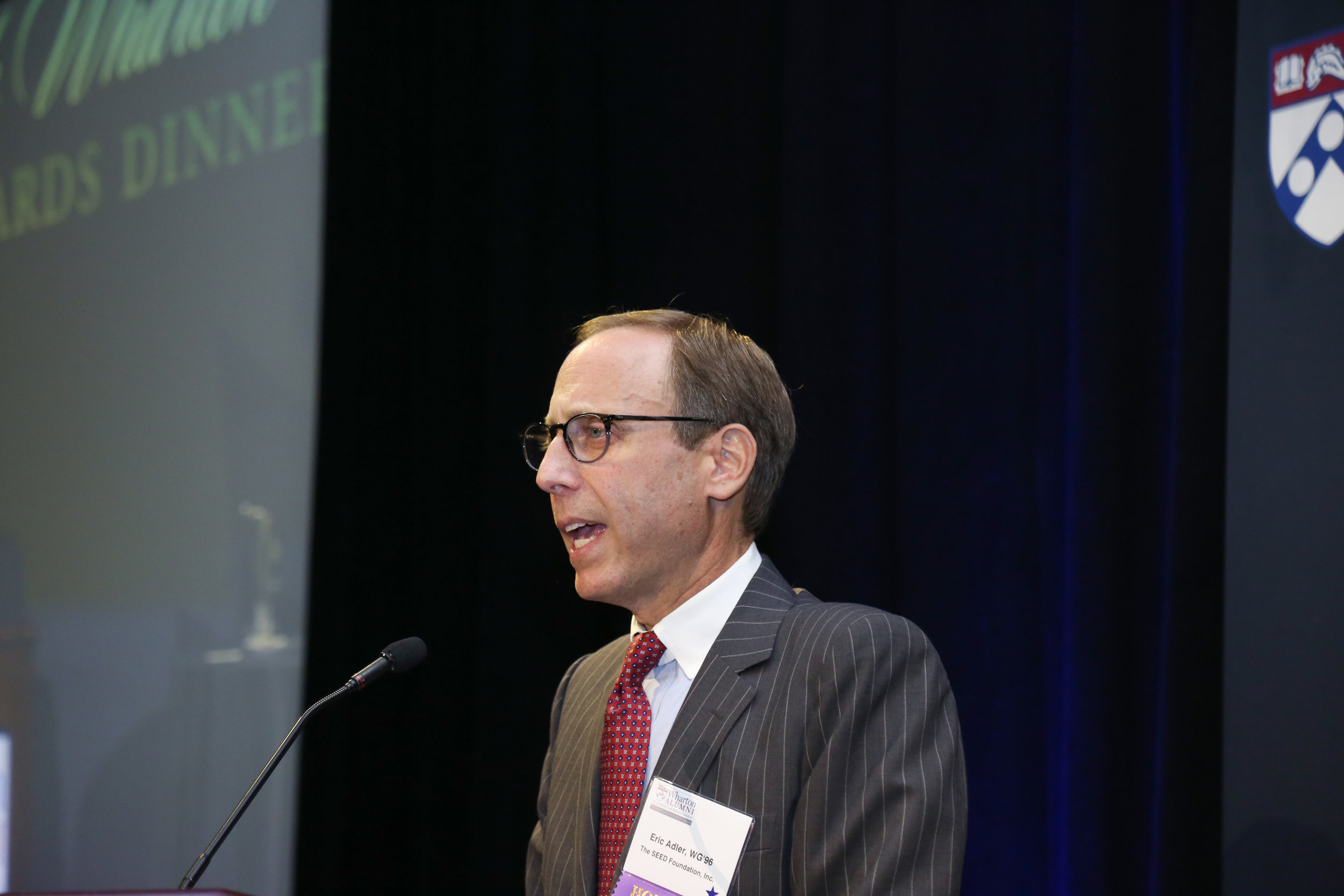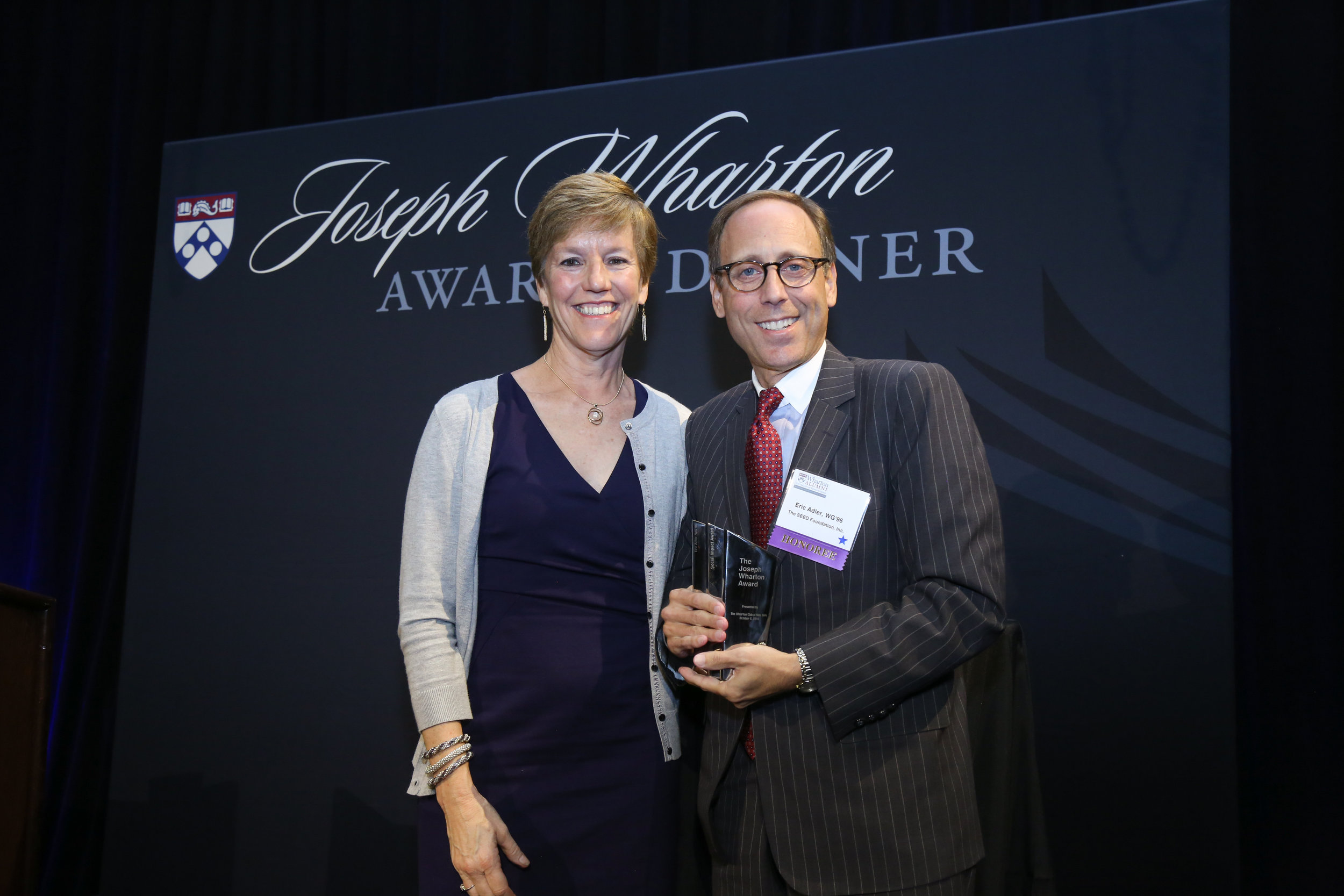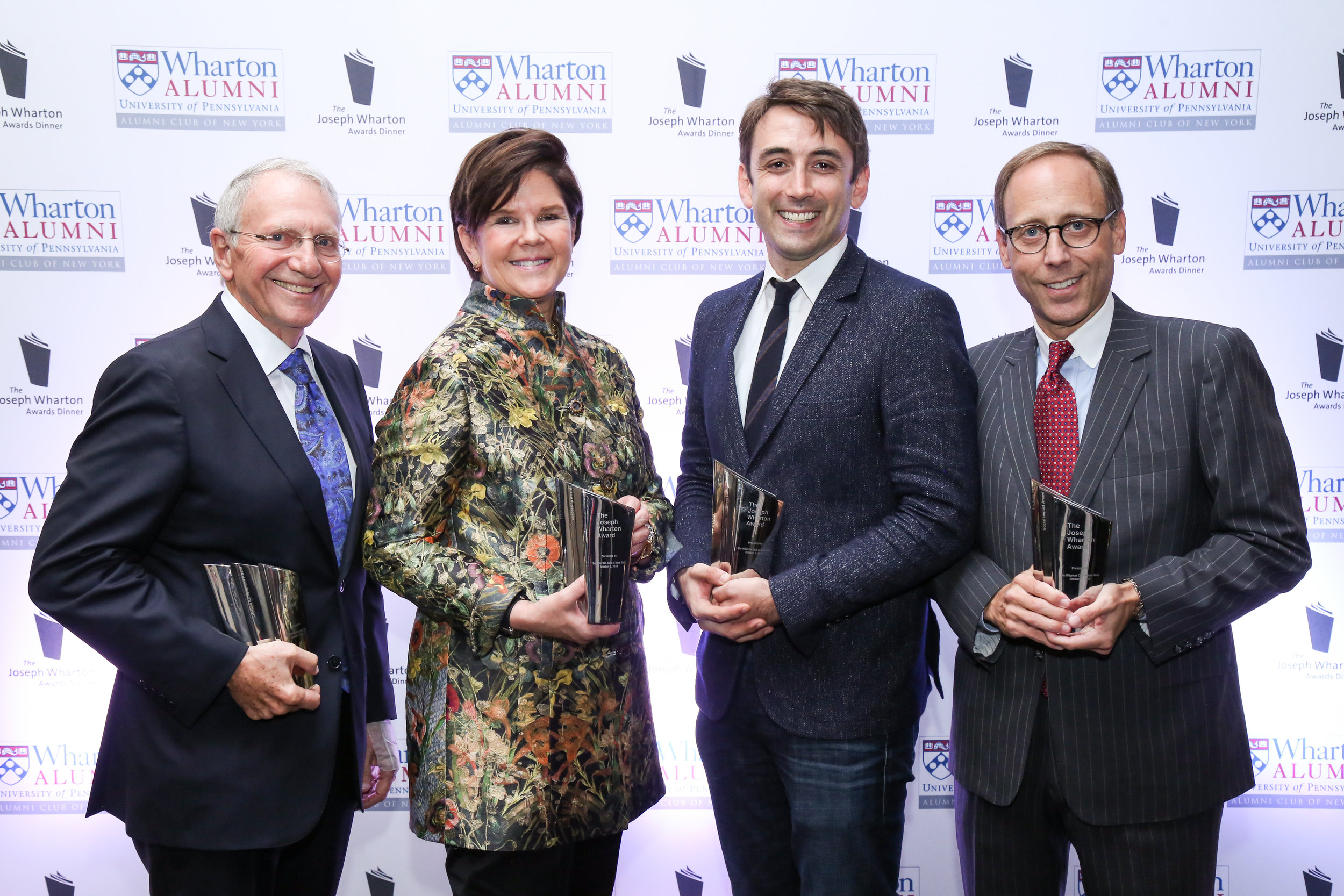Twenty years ago, SEED was just an idea that was beginning to bloom in the minds of our cofounders, Raj Vinnakota and Eric Adler. Now, it is a network of public boarding schools serving more than 900 students and nearly 400 graduates. Eric's vision and tenacity were most recently recognized by his alma mater, Wharton, which awarded him the Social Impact Award. An excerpt from his interview with them can be read below; read the full transcript to learn about the source of Eric's inspiration, how they convinced their first donors to support them, and the biggest challenges they faced.
This is a how-to story for someone who wants to start something big, fast. Eric Adler, WG’96, created a public boarding school 20 years ago, for kids from economically disadvantaged single-parent and no-parent homes, chosen by lottery without regard to academic talents. Now, with 355 students in D.C., 400 students in Baltimore and 180 students in South Florida, SEED students enter in the sixth grade and board until 12th grade. About 95% of the students at SEED schools graduate from high school, and 94% attend college.
He did all this while winning a fight against pancreatic cancer and then dealing with its complicated aftermath, including 35 surgeries last year.
Eric, within 18 months, you conceived an idea, lobbied Congress to amend a law, raised millions of dollars and opened a public charter boarding school for inner-city youth. How were you able to move that quickly?
Well, the arrogance of youth is incredibly powerful. My Co-Founder Rajiv Vinnakota, and I, we both had this idea for a public boarding school. If we’d been a little older, we might have thought twice about it. But we didn’t. We just did it. We met on February 11, 1997 and agreed, “Let’s open the school in September 1998 and back-map it to today for everything that has to get done.” We wrote it out on this whiteboard and said, “Well, we need a facility starting here. We won’t have the money until here, so that’ll leave three months. OK, so we’ll just build in three months.” Again, not knowing anything was really useful.
We’re on our third school now, and it’s so much harder to do because we have board members we have to bring along with us, and we have schools that already exist that have to be protected. There’s a real freedom in having nothing to lose, and nobody to tell you, “No.” You just go and you do it.
Why were you inspired to start SEED?
Before attending Wharton, I taught high school physics at St. Paul’s, a prep school outside of Baltimore. I taught mostly white upper-middle-class kids who were paying, not kids of color from the inner city who came in with varying levels of academic preparation.
One kid from the inner city had received a scholarship, and he commuted 90 minutes to school. Nobody was at home to cook his meals or iron his clothes, or make sure his homework was done. He had a huge disadvantage, and it showed. That’s when I had the idea. But I didn’t have the tools to do it, so I just tabled the idea. Read on.









